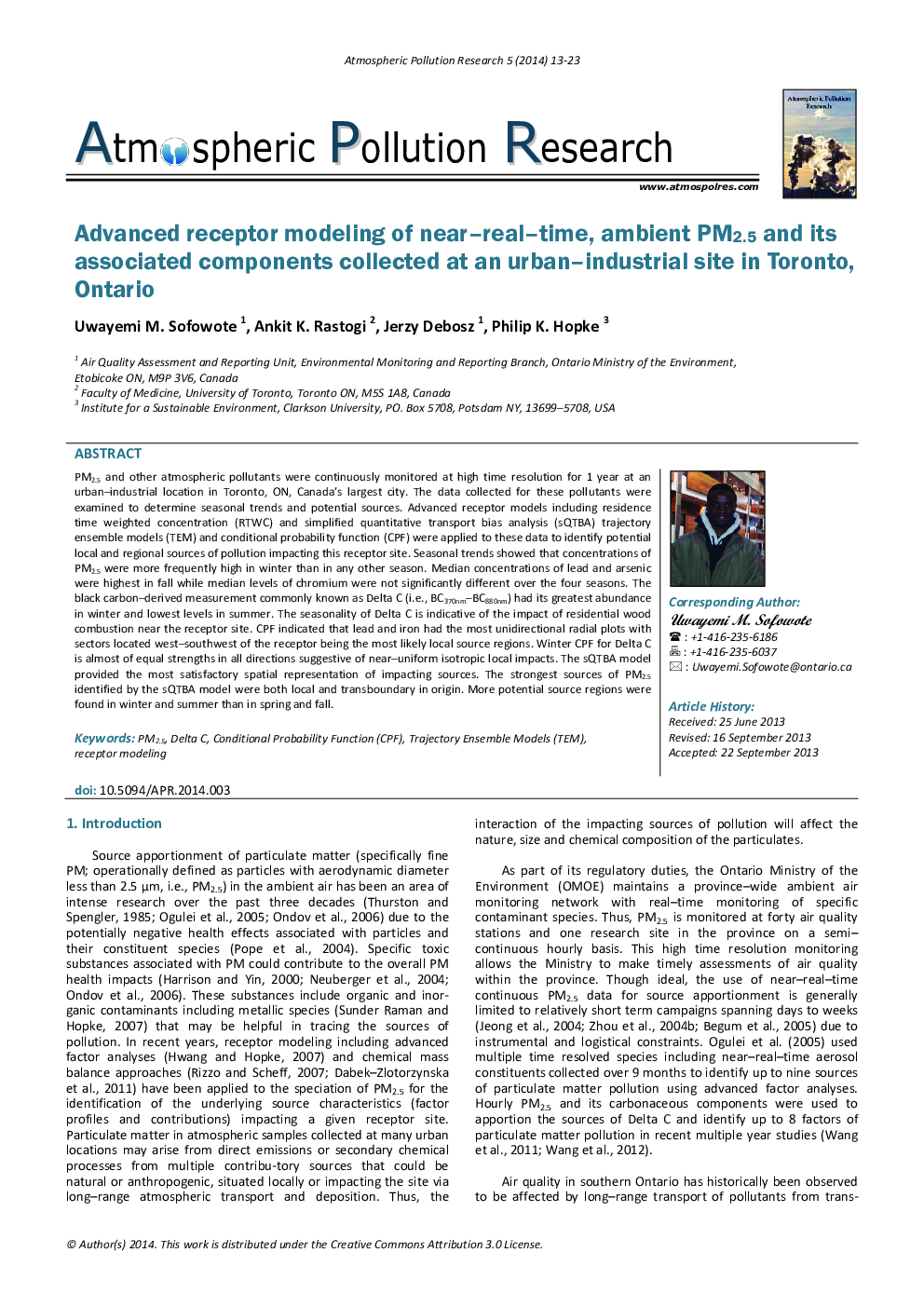| کد مقاله | کد نشریه | سال انتشار | مقاله انگلیسی | نسخه تمام متن |
|---|---|---|---|---|
| 4434729 | 1310524 | 2014 | 11 صفحه PDF | دانلود رایگان |

PM2.5 and other atmospheric pollutants were continuously monitored at high time resolution for 1 year at an urban–industrial location in Toronto, ON, Canada's largest city. The data collected for these pollutants were examined to determine seasonal trends and potential sources. Advanced receptor models including residence time weighted concentration (RTWC) and simplified quantitative transport bias analysis (sQTBA) trajectory ensemble models (TEM) and conditional probability function (CPF) were applied to these data to identify potential local and regional sources of pollution impacting this receptor site. Seasonal trends showed that concentrations of PM2.5 were more frequently high in winter than in any other season. Median concentrations of lead and arsenic were highest in fall while median levels of chromium were not significantly different over the four seasons. The black carbon–derived measurement commonly known as Delta C (i.e., BC370nm–BC880nm) had its greatest abundance in winter and lowest levels in summer. The seasonality of Delta C is indicative of the impact of residential wood combustion near the receptor site. CPF indicated that lead and iron had the most unidirectional radial plots with sectors located west–southwest of the receptor being the most likely local source regions. Winter CPF for Delta C is almost of equal strengths in all directions suggestive of near–uniform isotropic local impacts. The sQTBA model provided the most satisfactory spatial representation of impacting sources. The strongest sources of PM2.5 identified by the sQTBA model were both local and transboundary in origin. More potential source regions were found in winter and summer than in spring and fall.
Journal: Atmospheric Pollution Research - Volume 5, Issue 1, January 2014, Pages 13–23